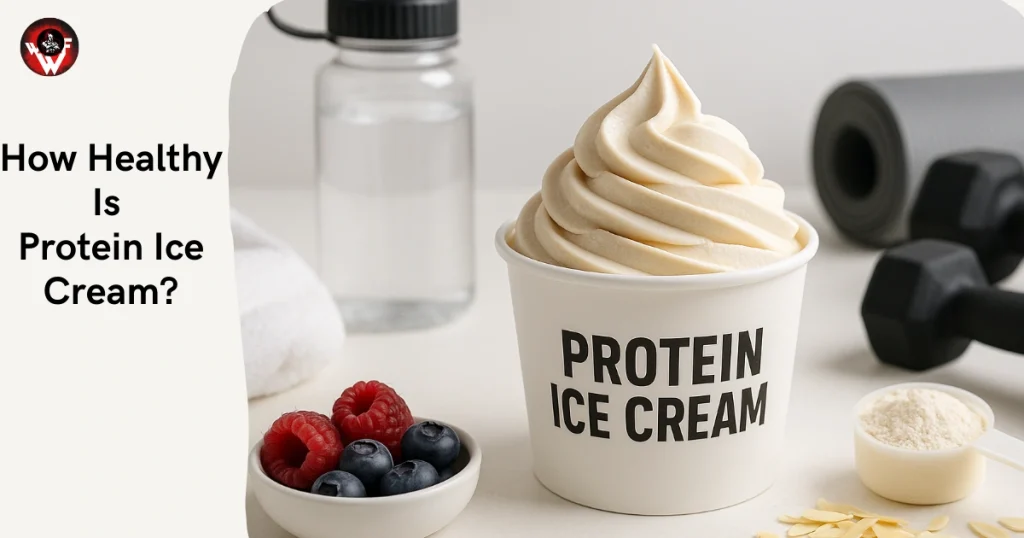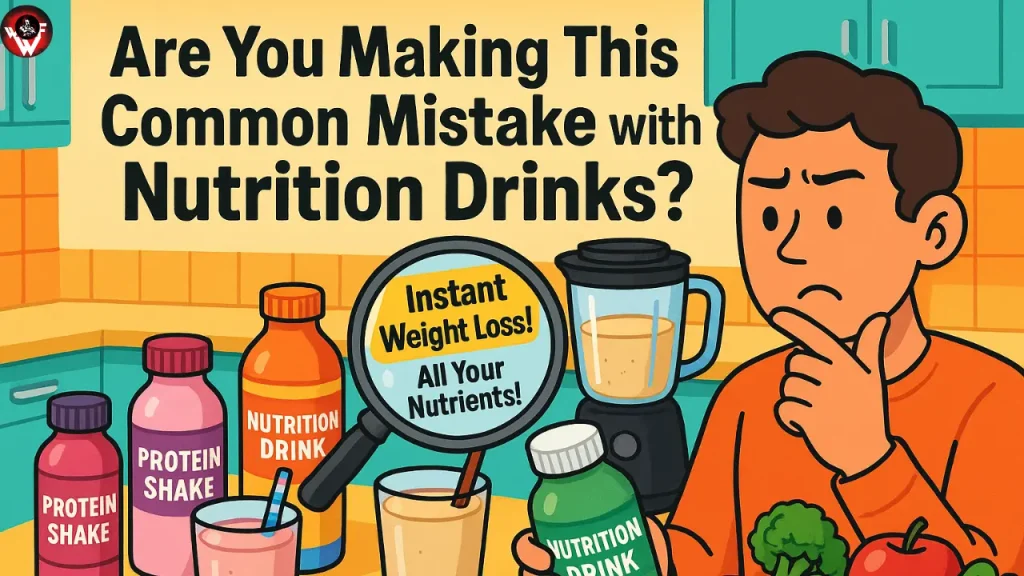
Introduction
Ice cream lovers, rejoice! A new generation of frozen treats promises all the pleasure with none of the guilt. Protein ice cream has taken the fitness and wellness world by storm, offering a sweet escape that claims to support muscle gains, weight loss, and clean eating. But the question remains: How healthy is protein ice cream, really?
In this comprehensive, fully updated, SEO-optimized article with excellent EEAT (Expertise, Experience, Authoritativeness, and Trustworthiness), we’ll unpack everything you need to know about protein ice cream—from its nutrition facts and benefits to the hidden ingredients and potential downsides.
Whether you’re bulking, cutting, or just love dessert, here’s the no-BS breakdown.
What Is Protein Ice Cream?
Protein ice cream is a high-protein alternative to traditional ice cream. It’s made with added whey, casein, plant protein, or milk protein concentrates, and is often lower in sugar, fat, and calories compared to conventional ice cream.
Common Protein Sources:
- Whey protein isolate or concentrate
- Casein protein
- Milk protein concentrate
- Pea, rice, or soy protein (for plant-based versions)
It’s marketed as a guilt-free dessert that fits into most fitness or weight management plans—offering 20–25g of protein per pint, compared to 4–6g in regular ice cream.
Nutrition Breakdown: Regular Ice Cream vs. Protein Ice Cream
| Nutrient (per ½ cup serving) | Regular Ice Cream | Protein Ice Cream |
| Calories | 200–250 kcal | 90–160 kcal |
| Protein | 2–4g | 6–10g |
| Total Fat | 10–16g | 2–6g |
| Saturated Fat | 6–10g | 1–3g |
| Sugar | 20–30g | 4–10g |
| Fiber | 0g | 3–5g (often added) |
Key takeaway:
Protein ice cream is often lower in sugar and fat, and higher in protein and fiber, which can help promote satiety, muscle recovery, and better macronutrient control.
Top 6 Health Benefits of Protein Ice Cream
1. Supports Muscle Recovery
Protein is essential for muscle repair and growth. Having a protein-rich dessert post-workout can aid recovery—especially when it contains high-quality protein sources like whey or casein.
2. Promotes Satiety
Thanks to the combo of protein and fiber, protein ice cream may help keep you full longer, reducing the urge to snack excessively or binge later.
3. Lower Sugar, Lower Guilt
Brands like Halo Top, Enlightened, and Nick’s cut sugar drastically using natural sweeteners (like stevia or erythritol), helping avoid sugar spikes and crashes.
4. Weight Management Friendly
Lower calories and higher protein make it a smart choice for those on calorie-controlled or macro-focused diets. Some pints clock in under 300 calories.
5. Better for Blood Sugar Control
Reduced sugar and low-glycemic index sweeteners help maintain stable blood sugar, making it a potential dessert for those managing insulin resistance or pre-diabetes (though portion control is still key).
6. Convenient and Portion-Friendly
Single-serve cups and portion-controlled packaging make it easier to enjoy a treat without going overboard.
Common Ingredients in Protein Ice Cream
While it sounds like a dream dessert, it’s important to look under the lid. Here are the typical ingredients:
✅ Common Healthy Additions:
- Whey or casein protein
- Prebiotic fibers like chicory root or inulin
- Natural sweeteners (erythritol, monk fruit, stevia)
- Coconut cream or almond milk (in dairy-free versions)
❌ Ingredients to Watch Out For:
- Artificial sweeteners (sucralose, aspartame)
- Stabilizers like carrageenan, guar gum, and xanthan gum
- Low-quality protein blends
- Synthetic emulsifiers or colorants
Is Protein Ice Cream Good for Weight Loss?
Yes—with a few conditions.
- Lower calorie density means you can enjoy dessert without blowing your daily caloric budget.
- Higher protein content promotes fullness, preserves muscle during weight loss, and helps curb cravings.
- However, it’s not a magic food. Overeating it—or choosing a brand that’s still high in sugar—can sabotage your goals.
Expert Tip:
Treat protein ice cream as a functional dessert, not a free-for-all binge. Stick to ½ cup to 1 cup servings.
Protein Ice Cream for Muscle Building
If you’re aiming to bulk or build lean muscle, protein ice cream can be a fun, recovery-supporting treat.
- Post-workout dessert: Ideal within your anabolic window
- Combine with fruit or granola for extra carbs
- Choose brands with 10g+ protein per serving for best results
However, remember: whole foods like chicken, eggs, and lentils should still form the base of your protein intake.
Potential Side Effects of Protein Ice Cream
While protein ice cream has its perks, it’s not all sunshine and six-packs.
1. Digestive Issues
Artificial sweeteners and sugar alcohols (like erythritol and xylitol) may cause:
- Bloating
- Gas
- Diarrhea
- Cramping
Especially in people with sensitive stomachs or IBS.
2. Overeating Due to “Health Halo”
Because it’s “low-calorie,” people may eat the whole pint, which can still add up to 300–500+ calories.
3. Not Always Natural
Despite the branding, some versions still contain:
- Artificial stabilizers
- Modified food starch
- Unnatural colors and preservatives
4. Allergens
Common allergens include:
- Dairy (whey, casein)
- Soy protein
- Tree nuts (in some dairy-free versions)
Always check the label, especially for plant-based or vegan versions.
Best Protein Ice Cream Brands (Ranked for Health)
Here’s a quick guide to some popular brands and how they compare:
| Brand | Protein per Pint | Calories per Pint | Sweetener Used | Notes |
| Halo Top | 20g–24g | 280–360 | Stevia, erythritol | Popular, low-calorie classic |
| Nick’s | 20g–24g | 220–320 | Erythritol, xylitol | Swedish-style, ultra-creamy |
| Enlightened | 20g+ | 280–360 | Allulose, monk fruit | Great keto and dairy-free options |
| Rebel | 18g+ | 320–400 | Erythritol, monk fruit | Keto-friendly, high fat |
| Breyers Delights | 20g | 260–330 | Stevia, maltitol | Mainstream option, mixed reviews |
Is It Really Better Than Regular Ice Cream?
| Criteria | Protein Ice Cream | Regular Ice Cream |
| Protein | ✅ Higher | ❌ Low |
| Sugar | ✅ Lower (in good brands) | ❌ Very High |
| Calorie Density | ✅ Lower | ❌ Higher |
| Fiber | ✅ Often Added | ❌ None |
| Artificial Additives | ⚠️ Sometimes present | ⚠️ Also present |
| Nutrient Density | ⚠️ Moderate | ❌ Poor |
Bottom line:
For most people, protein ice cream is a healthier option—especially when chosen wisely and eaten in moderation.
Who Should Eat Protein Ice Cream?
✅ Great for:
- Fitness enthusiasts looking for better macros
- Weight loss seekers craving dessert alternatives
- Diabetics (if sugar-free and approved by doctor)
- Busy professionals who want a portion-controlled snack
❌ Not ideal for:
- Those with sensitive digestion
- People allergic to dairy or soy (unless labeled allergen-free)
- Kids (due to sweeteners and unnecessary additives)
Tips for Choosing the Healthiest Protein Ice Cream
- Read the label: Look for <7g sugar, >5g protein per serving
- Check ingredients: Fewer, whole ingredients = better
- Go dairy-free if lactose intolerant
- Avoid sugar alcohols if you have gut sensitivities
- Don’t eat the whole pint—even if it says “only 300 calories”
DIY Protein Ice Cream Recipe (No Fancy Machine Needed)
Ingredients:
- 1 scoop whey protein (vanilla or chocolate)
- 1 frozen banana
- ½ cup Greek yogurt
- 1 tbsp almond butter
- Splash of almond milk
- Optional: stevia, cocoa powder, cinnamon
Directions:
- Blend all ingredients until smooth.
- Pour into a container and freeze for 2–3 hours.
- Let thaw for 5–10 mins, scoop, and enjoy!
✅ Macros (approx.): 250 kcal, 20g protein, 6g fat, 12g carbs
Final Verdict: How Healthy Is Protein Ice Cream?
Verdict: Moderately healthy to very healthy, depending on the brand and your personal health goals.
Protein ice cream can be a smart alternative to regular desserts—offering:
- Higher protein
- Lower sugar
- Fewer calories
- More satiety
However, it’s still a processed food and can contain artificial ingredients, digestive irritants, and excess calories if you’re not careful.
FAQs
1. Can I eat protein ice cream every day?
Yes, in moderation and as part of a balanced diet. Just don’t treat it as a meal replacement.
2. Is protein ice cream good for diabetics?
Low-sugar versions may be safe, but always consult your healthcare provider due to possible sugar alcohols.
3. What’s the best time to eat protein ice cream?
Post-workout or as an evening dessert—especially if it helps curb cravings.
4. Is homemade protein ice cream better?
Often, yes—because you control the ingredients and avoid additives.
5. Is it okay for kids?
It depends on the ingredients. Avoid artificial sweeteners and check protein content, which may be unnecessary for children.
Final Tip:
Choose quality over hype. Not all protein ice creams are created equal—so read the label, check the macros, and enjoy responsibly.



